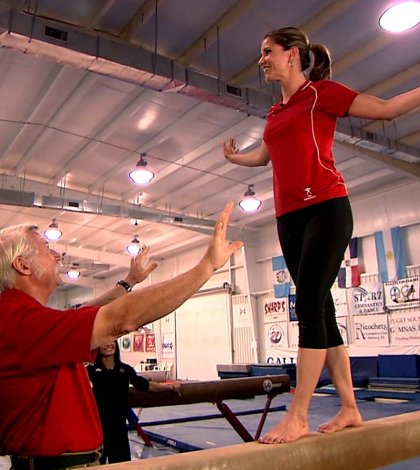Though the sport of rhythmic gymnastics is fairly new, much progress has been made not just within the United Kingdom but also on the international scene. Through sheer hard work and determination (along with a training schedule which is very much part time when compared to their Eastern European counterparts) British gymnasts have raised their scored from the lowly 6.0s attained in the first World Championships in 1975, to the 9.0s which they are scoring today.
However, it is becoming more apparent with the current standards of excellence at World and Olympic level that British gymnasts will be struggling even to maintain this level of work, let alone raise it further.
The rigorous training programs undertaken by such countries as Bulgaria and Russia are leaving many of the Western countries behind. Their systems of selection and priority training demand a sole, full time commitment by gymnast and coach within a highly structured and well financed school.
This, of course, is not the case in the United Kingdom, where it is difficult even to consider competing on the same level. It is obvious that training is of vital importance for success at rhythmic gymnastics, everyone should improve their standard of performance if they follow a carefully structured schedule irrespective of their reason for taking up the sport and their reason for training.
The basis of partner work with clubs can be built upon simple matching movements performed in unison, and showing changing relationships between the two performers.
The two clubs can be placed in one hand and passed to a partner as an exchange during a turn or a circling action of the arm, or they could be rolled or slid to each other within the composition of the sequence. There is more room here for originality and invention, allowing scope for the creative expertise of coach and gymnast.
































